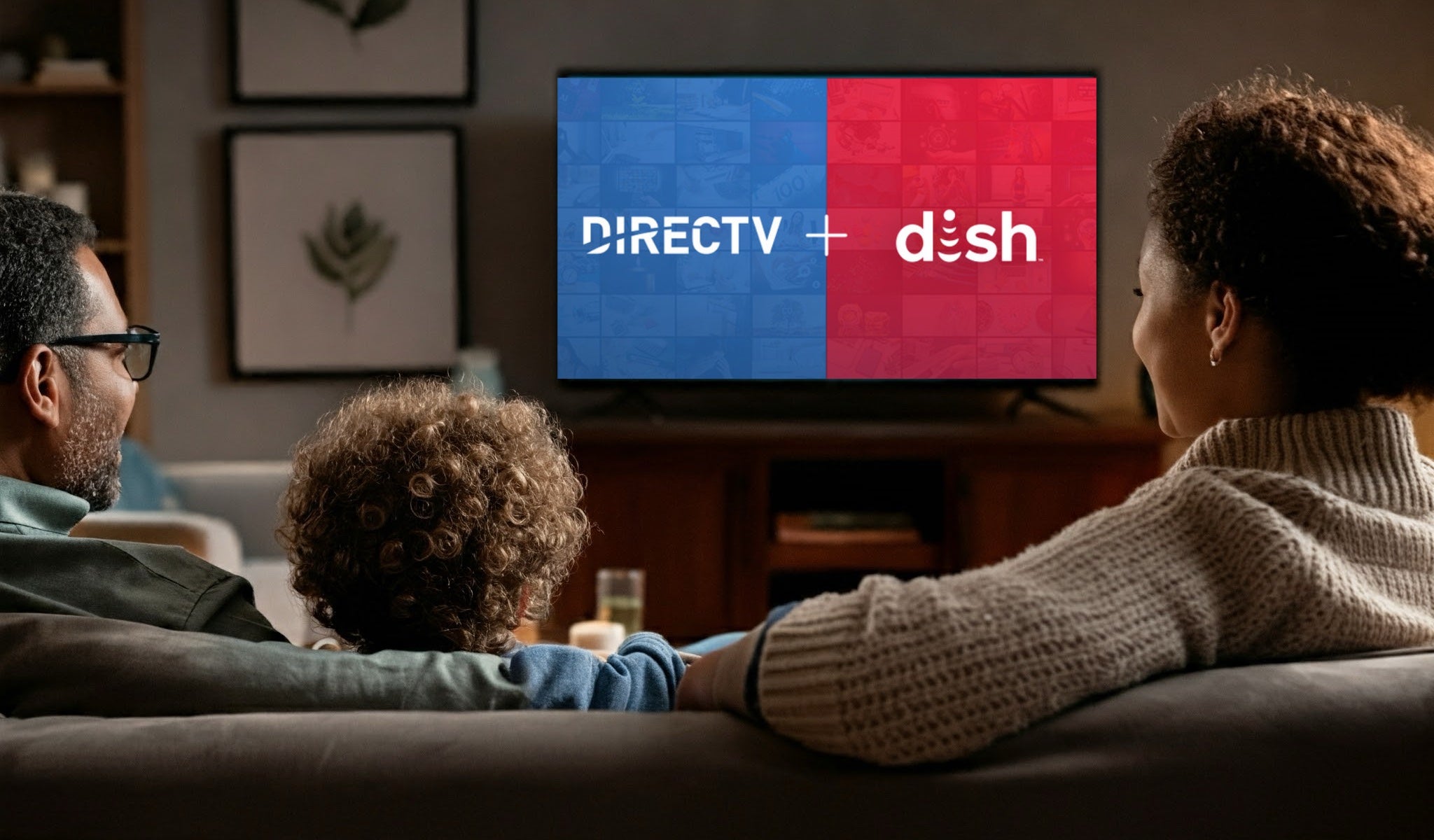Why Does DIRECTV and DISH Merger Matter to Consumers?
Why Does DIRECTV and DISH Merger Matter to Consumers?
The merger is expected to create the largest pay-TV distributor in the United States, surpassing Charter and Comcast.

After over 20 years of starts and stops, on Monday it became official that DIRECTV would acquire DISH, merging the two largest satellite companies in the United States and their respective live TV streaming services, DIRECTV STREAM, Sling TV, and others. This union is expected to result in the largest pay-TV provider in the United States, and with it, hopefully provide new opportunities for customers to sign up for TV packages that fit both their budgets and their viewing preferences.
Key Details:
- The merger will create the largest pay-TV provider in the United States with an estimated 19 million customers.
- The larger DIRECTV believes that it will be able to negotiate lower prices and more flexibility into carriage deals.
- This won’t stop cord-cutting, but it could have a far-reaching impact on the pay-TV industry.
Choose $15 OFF each month for the first 2 months of Entertainment with Sports Pack or $20 OFF each month for the first 3 months of Choice or Ultimate.

As the pay-TV industry has lost nearly half of its customers over the past decade, dropping from 102.1 million subscribers in 2011 to an estimated 55.3 today, the industry has dramatically changed as the largest content owners now seem singularly focused on streaming. At its peak in 2010, 88% of American households were signed up for either a cable or satellite subscription; that number is now below 50%. DIRECTV said in its press release announcing the deal that the two companies have collectively lost 63% of their satellite TV customers since 2016. Despite this fact, pay TV’s remaining consumers have continued to be squeezed by companies looking to make up for the lost revenue in recent years.
During carriage negotiations, channel owners have continued to insist on higher fees without providing much in terms of tangible changes to the product that they provide. While more and more of the most desirable content is shifted to streaming services, broadcast and cable schedules are being whittled down and content providers continue to cling to the standard operating procedures that made them billions during the industry’s heyday.
From a strategic standpoint, the combination of the two distributors will provide DIRECTV with more leverage in negotiations with channel and content owners. Earlier this month, DIRECTV was locked in a two-week carriage dispute with Disney that took 16 channels off of the company’s satellite and streaming platforms. While Disney was asking for increased carriage fees, DIRECTV fought for increased flexibility to provide skinnier channel lineups as a way to lower prices and increase value for consumers.
The two sides eventually came to a deal that will provide some of the relief that DIRECTV sought, but none of the changes have yet to go into place. This will likely be the new version of the company’s roadmap moving forward.
Following the completion of the acquisition, it is estimated that DIRECTV will have an estimated 18 to 19 million subscribers, surpassing the two largest cable companies in the country, Charter and Comcast, which each have just over 14 million customers. With its increased size, DIRECTV will theoretically be able to exert more power over providers to keep carriage fees — and in turn customer prices — down, as well as to negotiate for more flexibility in terms of what it can offer in terms of packages and channel lineups.
By bringing DISH’s 6.1 million satellite customers and Sling’s 2 million streaming customers under the DIRECTV umbrella, the company has suddenly become an even more powerful force in a dwindling industry. DIRECT is touting the merger as an opportunity to “provide consumers with more choices and better value.” It says that its increased scale will give it a stronger position to negotiate for smaller packages and lower prices for the channels it offers, something that heretofore has been incredibly difficult to achieve for pay-TV distributors.
DIRECTV also believes that the new company will allow it to negotiate with providers for access to streaming services that customers will be able to access as part of their subscriptions. This is another allowance that the company was able to secure from Disney and will likely insist upon moving forward. DIRECTV and other distributors have raised concerns over the fact that when content owners put titles that initially air on linear TV onto streaming services, customers end up paying for the same programming twice. However, by making Disney+ or Hulu available to DIRECTV customers at no extra cost, they are able to save customers money while also helping to reduce churn because the bundle provides a markedly better value.
The newly combined company also will prioritize the future of the company. As an increasing number of consumers cut the cord, DIRECTV noted that by eliminating redundancies between it and DISH’s operations, it would have “an enhanced ability to make the investments required to improve its streaming services.”
Unlike other mergers and joint ventures that have drawn the ire of regulators and competitors, the combination of DIRECTV and DISH is not expected to be met by any regulatory roadblocks. In 2002, the Department of Justice sued to prevent the two companies from merging, but with the rapid decline in pay-TV customers in the U.S., the industry is in a much different position than it was two decades ago; it needs reinvention and mergers like this might be the only way it survives.
So, if the larger, more robust DIRECTV is able to follow the gameplan that it executed in its carriage negotiations with Disney on a larger scale, this could not only have significant impacts on the company’s customers, but on the industry as a whole. Once the largest pay-TV provider in America is able to codify concessions from content providers, every other distributor will begin pushing for the same allowances when their deals come up. While this move in itself is not likely to completely stem the tide of customers fleeing traditional TV for streaming alternatives, it could play a significant role in reshaping what pay TV has to offer customers while reinventing what the industry looks like in the future.
DIRECTV STREAM
DIRECTV STREAM is The Streamable’s choice for the best live TV streaming service for users who want the most channels. With an unbeatable lineup of local, news, sports, and entertainment channels, four main channel packages, an unlimited DVR, and 20 simultaneous streams at home, DIRECTV STREAM is a great choice for any cord-cutter.

